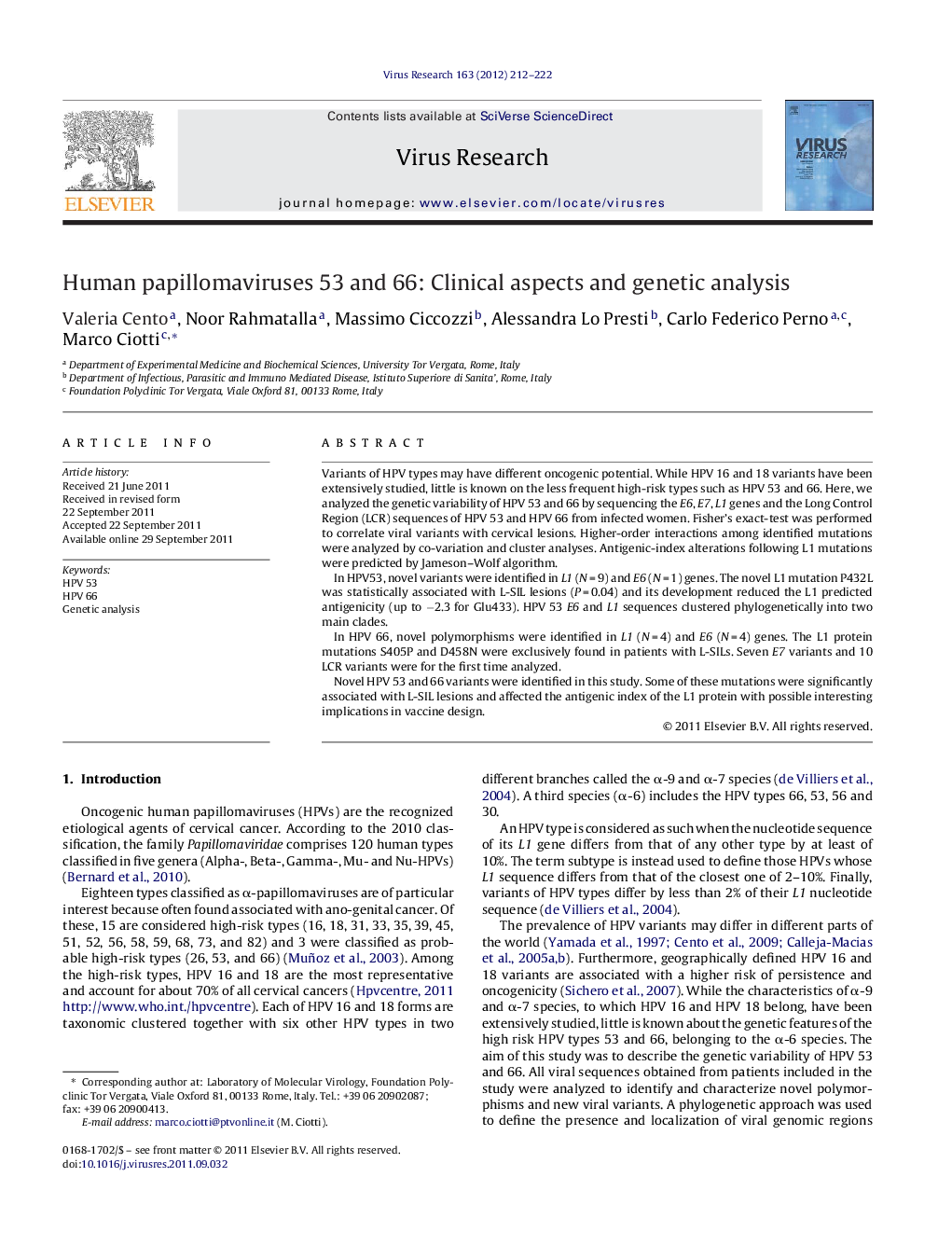| Article ID | Journal | Published Year | Pages | File Type |
|---|---|---|---|---|
| 6143259 | Virus Research | 2012 | 11 Pages |
Variants of HPV types may have different oncogenic potential. While HPV 16 and 18 variants have been extensively studied, little is known on the less frequent high-risk types such as HPV 53 and 66. Here, we analyzed the genetic variability of HPV 53 and 66 by sequencing the E6, E7, L1 genes and the Long Control Region (LCR) sequences of HPV 53 and HPV 66 from infected women. Fisher's exact-test was performed to correlate viral variants with cervical lesions. Higher-order interactions among identified mutations were analyzed by co-variation and cluster analyses. Antigenic-index alterations following L1 mutations were predicted by Jameson-Wolf algorithm.In HPV53, novel variants were identified in L1 (NÂ =Â 9) and E6 (NÂ =Â 1) genes. The novel L1 mutation P432L was statistically associated with L-SIL lesions (PÂ =Â 0.04) and its development reduced the L1 predicted antigenicity (up to â2.3 for Glu433). HPV 53 E6 and L1 sequences clustered phylogenetically into two main clades.In HPV 66, novel polymorphisms were identified in L1 (NÂ =Â 4) and E6 (NÂ =Â 4) genes. The L1 protein mutations S405P and D458N were exclusively found in patients with L-SILs. Seven E7 variants and 10 LCR variants were for the first time analyzed.Novel HPV 53 and 66 variants were identified in this study. Some of these mutations were significantly associated with L-SIL lesions and affected the antigenic index of the L1 protein with possible interesting implications in vaccine design.
⺠The study investigated the genetic variability of HPV 53 and 66. ⺠Novel mutations were uncovered in both HPV types. ⺠HPV 53 L1 and E6 genes clustered in two main clades. ⺠Some of the novel mutations affected the antigenic index of the L1 protein.
